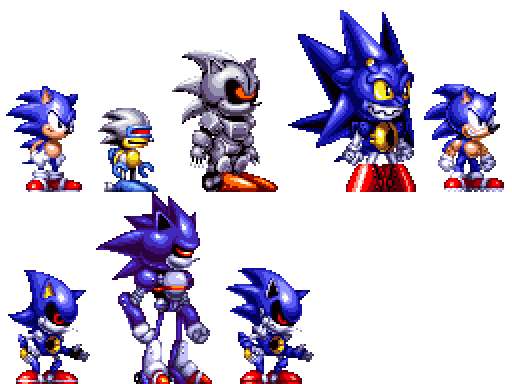

Since each tile is 32 B, the zako tiles take a whopping 12 KB of the 64 KB of available VRAM (nearly 20%!). In total, there are almost 400 tiles stored in VRAM at all times to display the zako and their animations. These tiles are static they do not stream into VRAM like the player character’s tiles. There are approximately 13 rows of 30 tiles each for the enemy zako characters (the selected display palette shows their legs as green rather than the red of the on-screen characters). Now, look at the top half of the VRAM display. Using this technique, the entire complex range of animations can be fit into just ~20 tiles. As the character moves, new tiles are streamed into VRAM on-the-go at the same memory location. The tiles for the player character are shown towards the bottom of the VRAM display, just above the row of letters. To the right is a section of VRAM, which is being updated in real time as the game plays. Only a relatively small number of tiles can be loaded into VRAM each frame, so this technique is usually limited to just the player character.īoth of these techniques can be seen in the following clip, which shows a section of VRAM to the right of the game screen: To the left is the game screen from Gunstar Heroes. Since it’s visually appealing and often necessary from a gameplay standpoint to have a player character with a lot of animation, rather than updating the sprite attribute table to point to new tiles, developers can instead stream new tiles into VRAM at the same location and keep the sprite table unchanged. However, rather than load all of the animations into VRAM at once, there is another technique that is often used for the main player character. Since VRAM space is very limited, developers are typically restricted in how many frames of animation they can give a character. In many cases, to accomplish this, all of the animation frames are loaded into VRAM at once, and then the sprite attribute table is updated every however-many-frames to reference a different tile. You can directly reference any custom sprite by calling sprite_get( name :string ) in four animation frames making up the above animation.Īnimation is created by switching the displayed tile from one frame to the next. To help place origins correctly, use the Rivals Workshop Helper. The origin for all sprites is set to top left (0, 0) by default. Hurtbox sprites for attacks ( _hurt sprites) use precise collision instead. Hurtbox sprites for non-attack states ( _hurtbox, _crouchbox, _hurtbox_air, _hitstun_hurtbox) use rectangular collision. If you want the sprite to replace one of the existing character states without any scripting, you should name it accordingly.


 0 kommentar(er)
0 kommentar(er)
